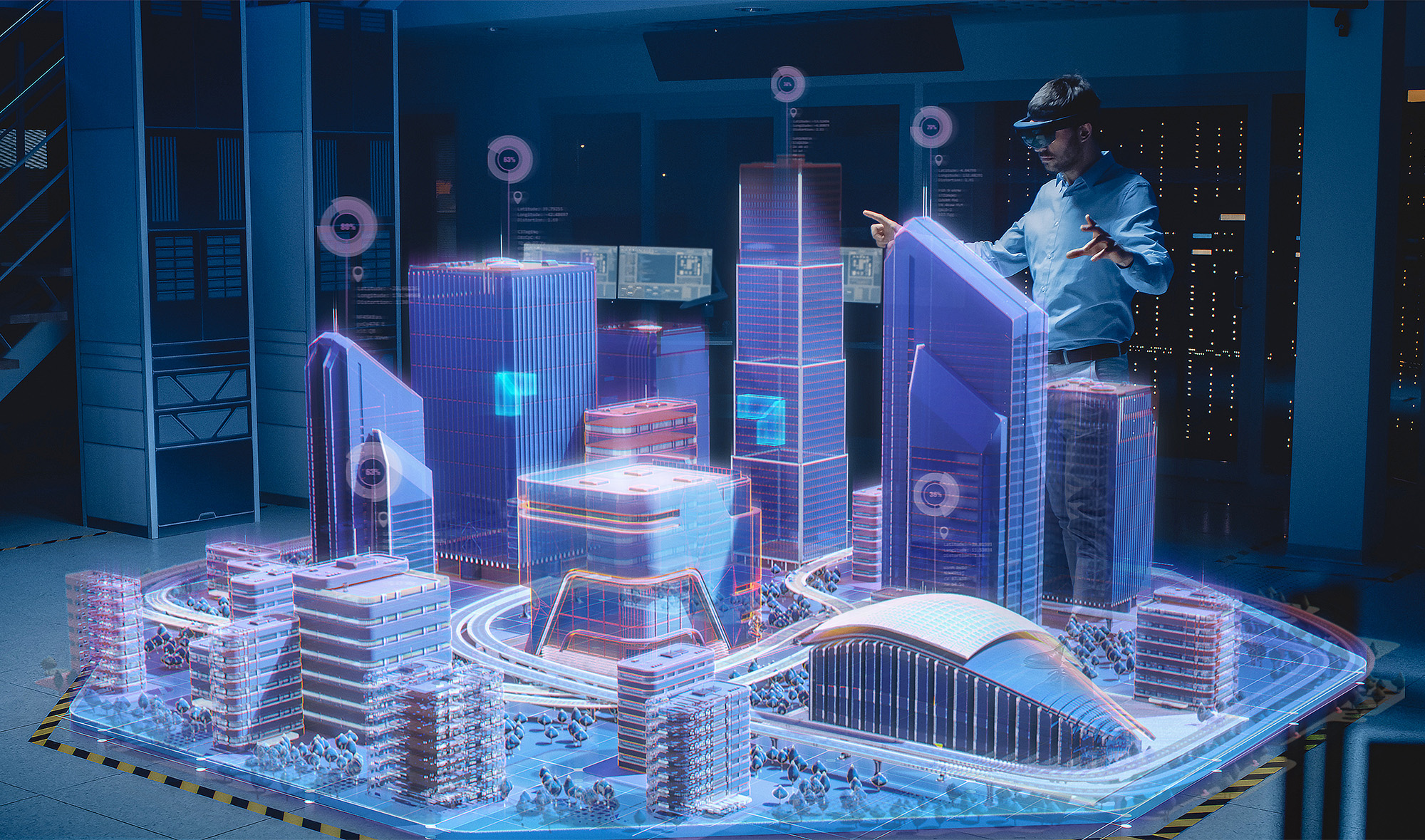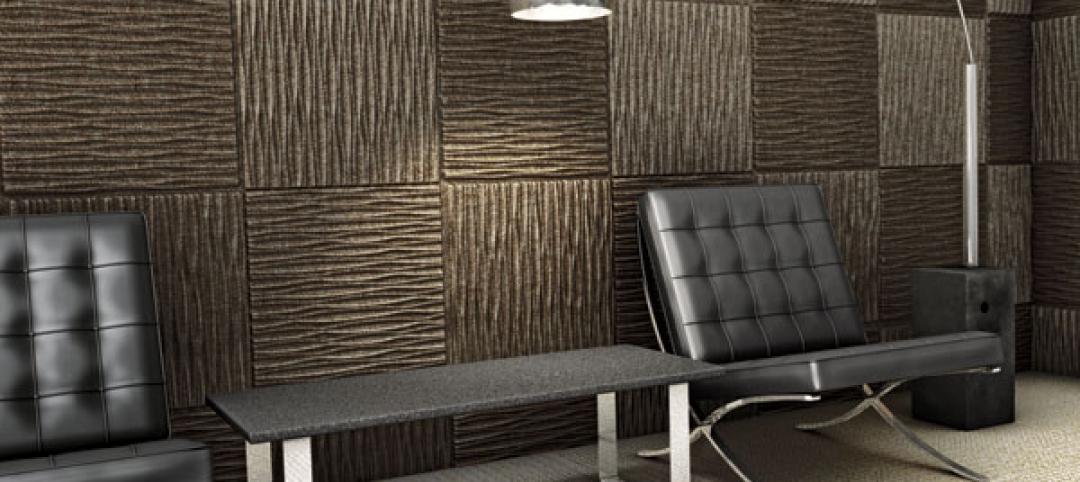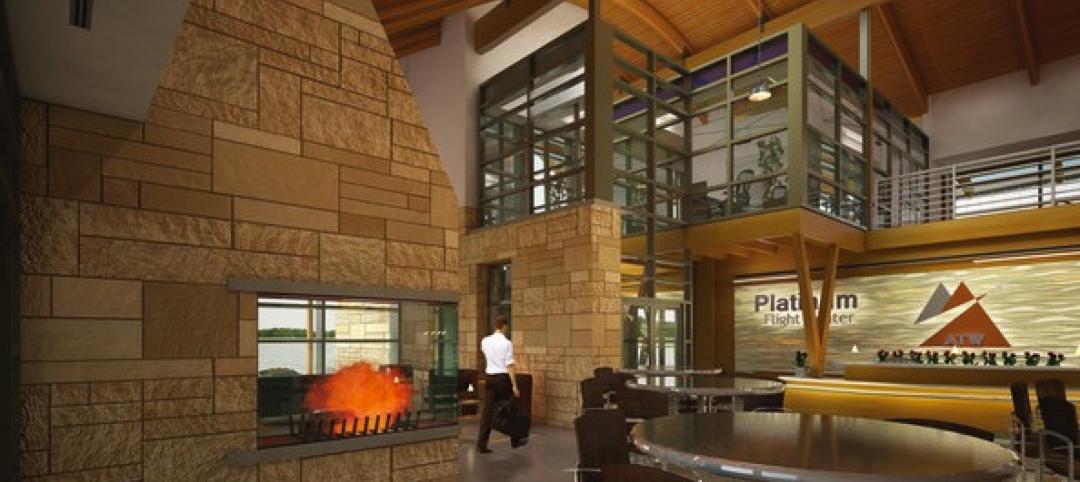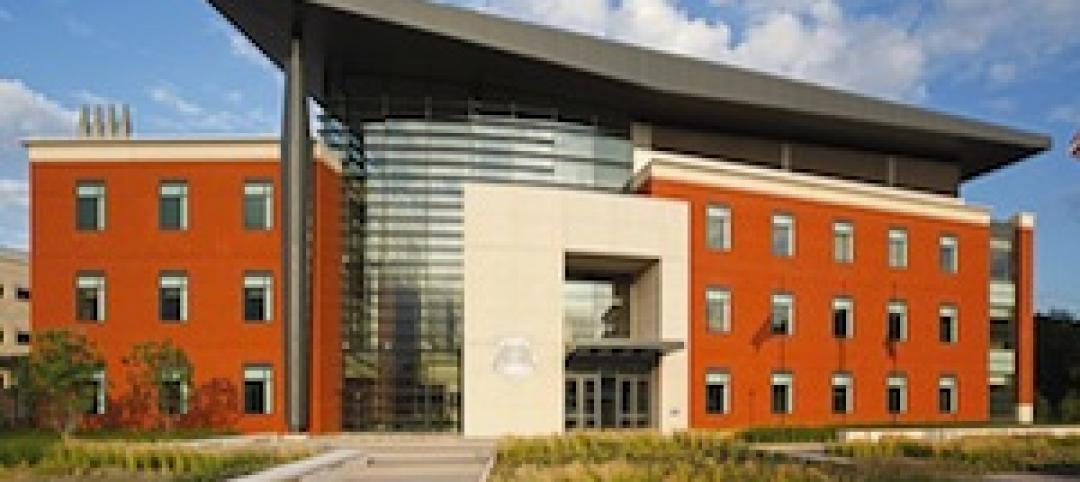The elusive “digital twin.” A virtual space that doesn’t quite live in the metaverse, but is definitely more than just your average BIM model. While their use cases are continually developing, a growing number of AEC firms and building owners are finding value in implementing digital twins to unify design, construction, and operational data.
But what are the benefits, both by sector and overall? And where do architects, engineers, and construction professionals fit in?
AEC Firms Engaging With Digital Twin Tools
A digital twin is the digital replica of a physical building that holds its information in one place—like a “shoebox.” Though they can be two-dimensional or 3D, digital twins offer a tell-all locale for a facility’s systems, from electrical work to its structural layout. More importantly, digital twins pave the way for analytics-driven action.
With some building owners beginning to include digital twin requirements in project RFPs, AEC firms are beginning to build digital twins for their clients, according to Robert Bray, VP and General Manager, Autodesk Tandem.
“This is creating new business opportunities for AEC firms, driving meaningful conversations about outcomes and data, and is creating the potential for longer term engagements with their clients,” says Bray.
As AEC firms engage with building digital twins, they can help advance their clients’ initiatives like monitoring and meeting sustainability goals—as well as gain knowledge to plan, design, and build better themselves in the future.
Artificial intelligence
With the influx of artificial intelligence-influenced workflows, digital twins could soon be getting smarter as well. Predictive models might analyze construction data or building conditions to better manage assets, according to Tiago Ricotta, Customer Experience Team Manager at Trimble, an industrial technology company.
“This could give really good inputs for early conceptual design,” he adds.
Digital twins as a live link
For an organization looking to create a digital twin for its building—or AEC firms beginning to build digital twins for their clients—clear objectives should first be set. Without this, it can be difficult to establish what level of detail is needed and whether or not there will be a live link between the model and real life.
“A digital model that nobody accesses or that doesn’t provide information doesn't have many purposes,” says Ricotta. “It should be designed in a way that helps gather the information that will help people understand and use the data it provides.”
This data could track systems in the building, like water and energy usage, with sensors installed that connect it to the digital twin. The twin can map out areas for maintenance teams, providing vision and training before entering restricted/dangerous areas. Other insights from discovering potential issues to reviewing trends would be consolidated into one place—making the digital twin a one-stop shop for facility management.
Enhancing User Experience for Digital Twin Users
While the benefits behind the scenes are plentiful, one of the biggest advantages of buildings with a digital twin is enhancing the user experience for its occupants. Currently, corporate offices are the largest sector that has embraced digital twins. However, we’re seeing use cases in hospitals and retail environments begin to grow, according to Morten Brøgger, CEO of MapsPeople, an indoor mapping tech company.
Digital twin uses across builder sectors
Across multiple sectors, digital twins can help people connect with space. Some practical examples include:
- Stadium parking. Attending fans have the ability to book a parking space from their phone, and can plan their route inside the stadium before they’ve even left the house.
- Airport traversal. Airline travelers can receive real-time airport updates as they’re walking to their gate, from restaurant wait times to flight ETAs.
- Preserving historic buildings. Through Historic Building Information Modeling (HBIM), detailed 3D models of historic buildings aid in preserving heritage, community spaces, and future renovations.
- Navigating large buildings. Walking through hospital wings, university buildings, or convention center show floors could be made easier with indoor mapping.
- Hotels. Hotels can offer accessible routes and services to guests with special mobility needs.
- Corporate office layouts. In a hybrid work-from-home world, employees who may be less familiar with their office’s environment could get a helping hand from digital twins.
- Retail spaces. Retailers can empower shoppers to find products more quickly.
The end goal? Help facility owners and its stakeholders to rectify issues before they become problems, and make decisions based on data rather than guesswork.
Related Stories
| Nov 15, 2013
Metal makes its mark on interior spaces
Beyond its long-standing role as a preferred material for a building’s structure and roof, metal is making its mark on interior spaces as well.
| Nov 13, 2013
Installed capacity of geothermal heat pumps to grow by 150% by 2020, says study
The worldwide installed capacity of GHP systems will reach 127.4 gigawatts-thermal over the next seven years, growth of nearly 150%, according to a recent report from Navigant Research.
| Oct 30, 2013
11 hot BIM/VDC topics for 2013
If you like to geek out on building information modeling and virtual design and construction, you should enjoy this overview of the top BIM/VDC topics.
| Oct 18, 2013
Researchers discover tension-fusing properties of metal
When a group of MIT researchers recently discovered that stress can cause metal alloy to fuse rather than break apart, they assumed it must be a mistake. It wasn't. The surprising finding could lead to self-healing materials that repair early damage before it has a chance to spread.
| Sep 30, 2013
Smart building systems key to new Wisconsin general aviation terminal’s net zero target
The Outagamie County Regional Airport’s new 8,000 sf general aviation terminal was designed to achieve net zero.
| Sep 19, 2013
What we can learn from the world’s greenest buildings
Renowned green building author, Jerry Yudelson, offers five valuable lessons for designers, contractors, and building owners, based on a study of 55 high-performance projects from around the world.
| Sep 19, 2013
6 emerging energy-management glazing technologies
Phase-change materials, electrochromic glass, and building-integrated PVs are among the breakthrough glazing technologies that are taking energy performance to a new level.
| Sep 11, 2013
BUILDINGChicago eShow Daily – Day 3 coverage
Day 3 coverage of the BUILDINGChicago/Greening the Heartland conference and expo, taking place this week at the Holiday Inn Chicago Mart Plaza.
| Sep 10, 2013
BUILDINGChicago eShow Daily – Day 2 coverage
The BD+C editorial team brings you this real-time coverage of day 2 of the BUILDINGChicago/Greening the Heartland conference and expo taking place this week at the Holiday Inn Chicago Mart Plaza.
| Aug 30, 2013
Local Government Report [2013 Giants 300 Report]
Building Design+Construction's rankings of the nation's largest local government design and construction firms, as reported in the 2013 Giants 300 Report.

















